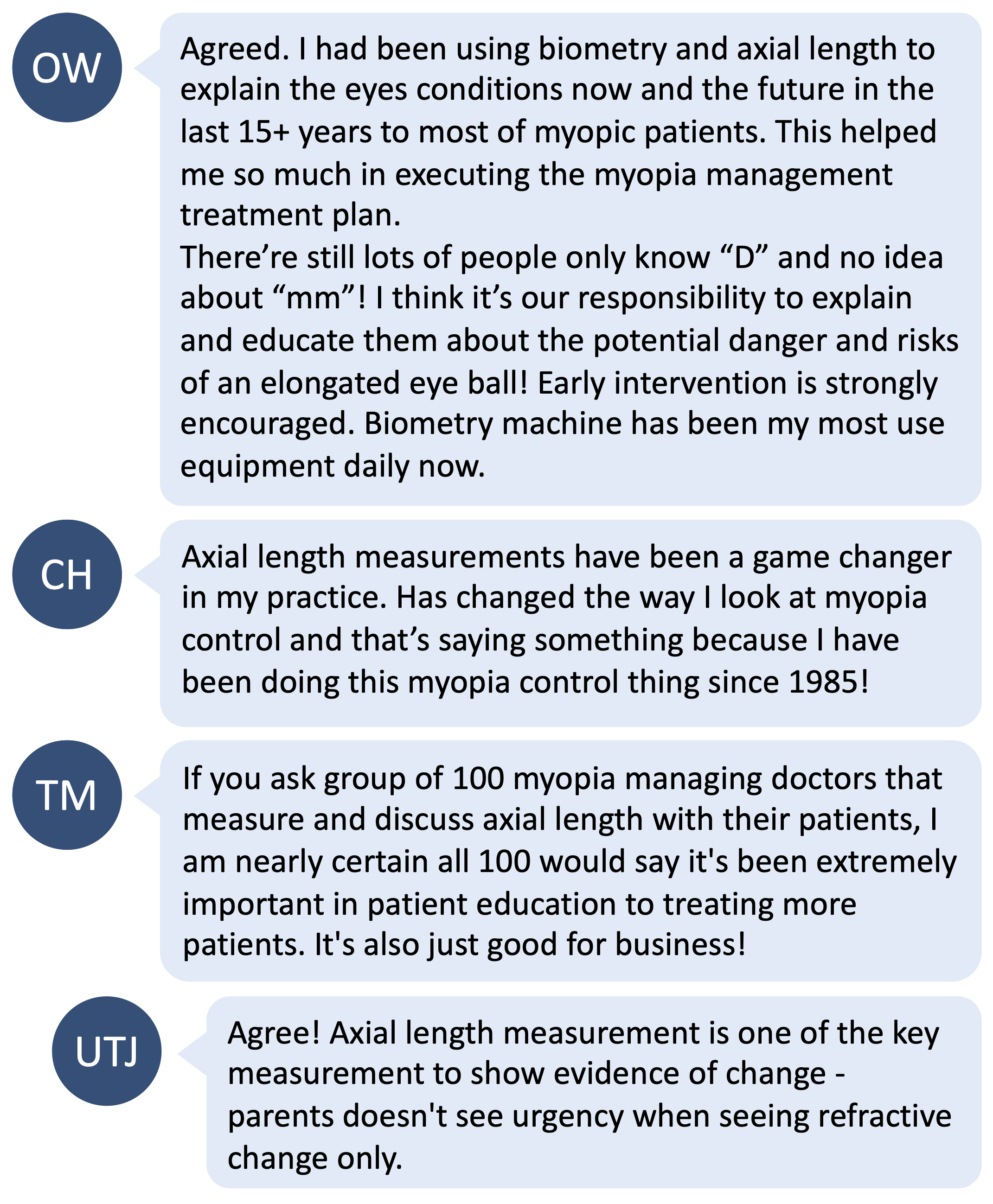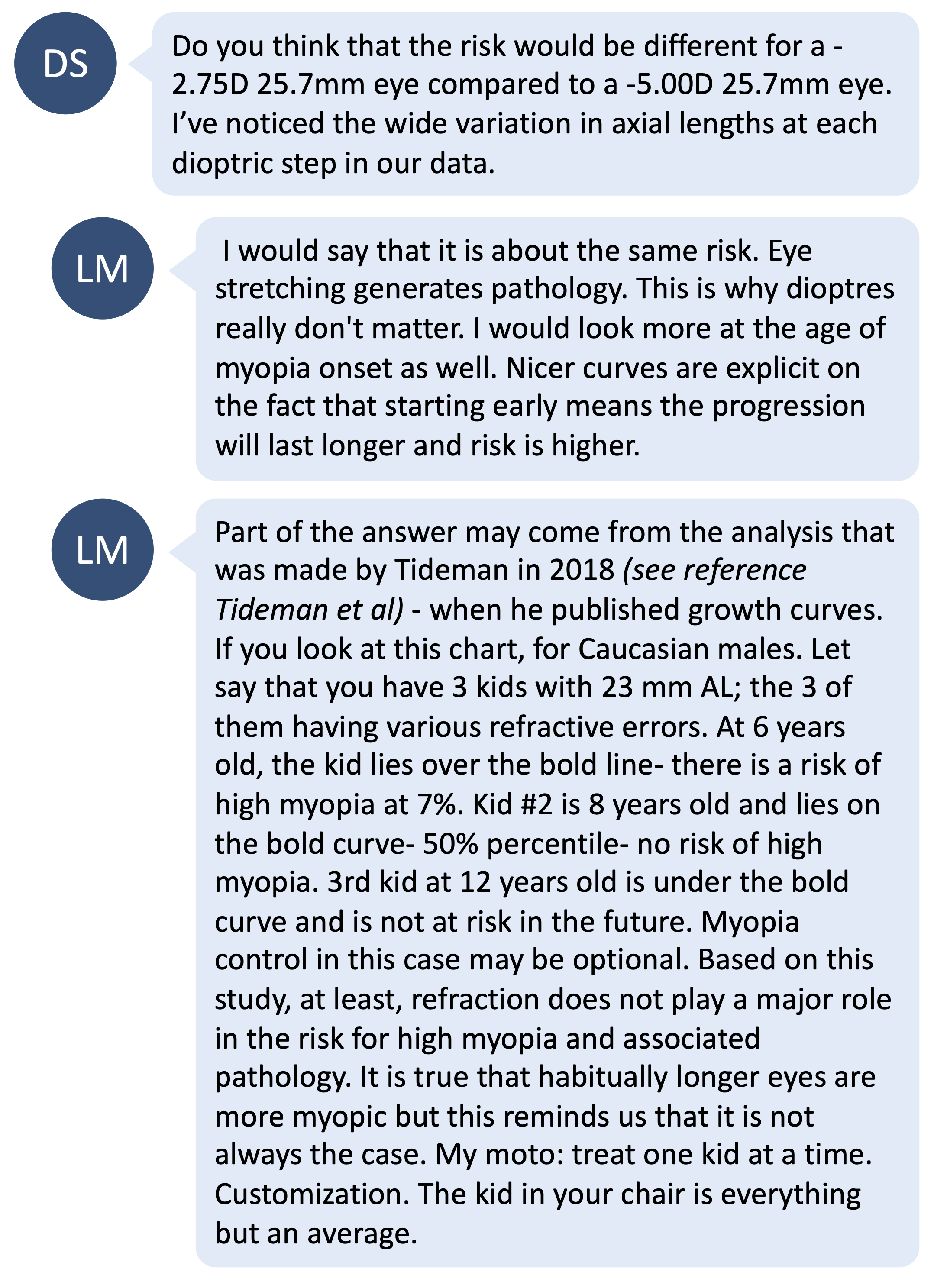"Axial length" is a terminology with which many parents may not be familiar. The most common quantifier of myopia for eye care practitioners and parents alike is refractive error. Here is a case by LM about how adding axial length measures to the clinical discussion can change the picture of a child's myopia and the decision to commence myopia control treatment.

Axial length is the key measurement in myopia control

The commenters agreed on the invaluable benefits of measuring axial length in myopia management. Excessive axial length growth increases the risk of eye diseases associated with myopia such as retinal detachment and myopic macular degeneration, and increase the risk of visual impairment.1 Hence, as eye care practitioners, we have the responsibility to make sure that parents are educated on this important 'why' of myopia management.
It has been shown that less than half of parents consider that myopia presents a health risk to their children.2 In addition, another study showed 88% of parents are unaware of complications associated with high myopia.3 On the more positive side, 66% of parents were willing to commence myopia management after watching educational videos about myopia control options.3 This indicates the value of parental education - minds can be changed with the right information provided.
How axial length drives treatment decisions

Whilst refractive error has a correlation with axial length, it is possible for patients to have long axial lengths with low levels of myopia. This is important clinical information, as in this case, axial length data may change a parent's perception on the urgency of instigating myopia management. As diagnostic instruments to measure axial length are increasingly used in primary eye care, this becomes an invaluable tool in practice. Percentile growth curves are becoming more commonplace to assess and quantify the risk of a child's myopic progression.4 To learn more, read How to use axial length growth charts.
Take home messages:
- Axial length data can be an invaluable tool to illustrate the 'why' of myopia management, especially in cases where the axial length is approaching 26mm.
- Parental education is key for a child's access to myopia control strategies.
- Children with low myopic refractive error can still register long axial length readings, so recommendations for myopia control is still imperative in this cohort.
Further reading

About Kimberley
Kimberley Ngu is a clinical optometrist from Perth, Australia, with experience in patient education programs, having practiced in both Australia and Singapore.

About Connie
Connie Gan is a clinical optometrist from Kedah, Malaysia, who provides comprehensive vision care for children and runs the myopia management service in her clinical practice.
This content is brought to you thanks to an unrestricted educational grant from

References
- Williams K, Hammond C. High myopia and its risks. Community eye health. 2019;32(105):5. (link)
- McCrann S, Flitcroft I, Lalor K, Butler J, Bush A, Loughman J. Parental attitudes to myopia: a key agent of change for myopia control? Ophthalmic Physiol Opt. 2018 May;38(3):298-308. (link)
- Meyer D, Mickles C, Cox S, Kollbaum PS. Parent perceptions of myopia and myopia control. Investigative Ophthalmology & Visual Science. 2016 Sep 26;57(12):2486-. (link)
- Tideman JWL, Polling JR, Vingerling JR, Jaddoe VWV, Williams C, Guggenheim JA, Klaver CCW. Axial length growth and the risk of developing myopia in European children. Acta Ophthalmol. 2018 May;96(3):301-309. (link) [Link to Myopia Profile Science Review]











